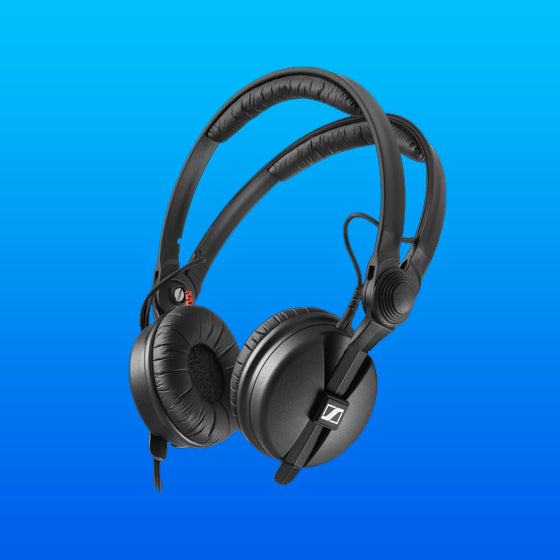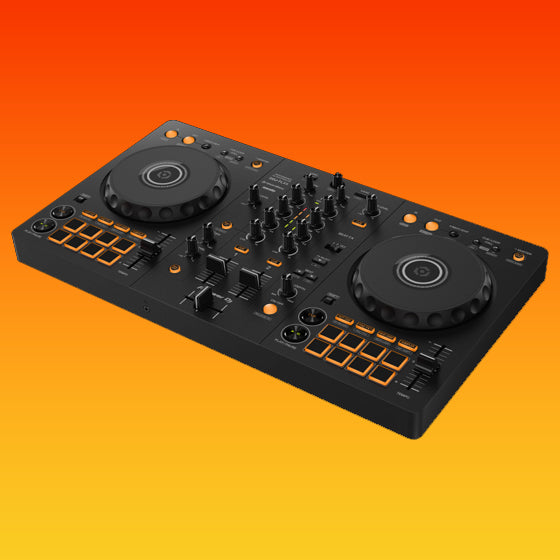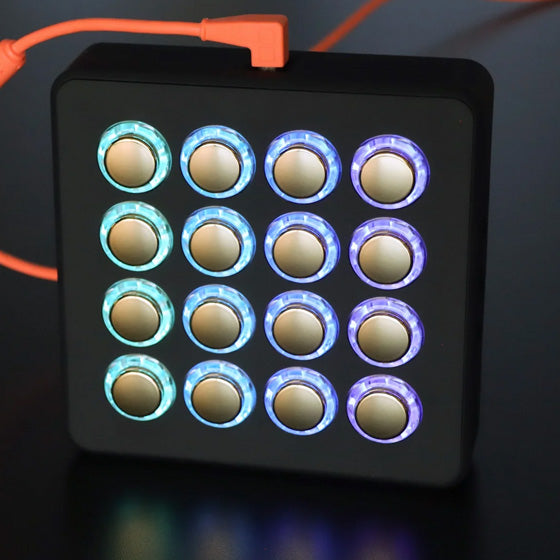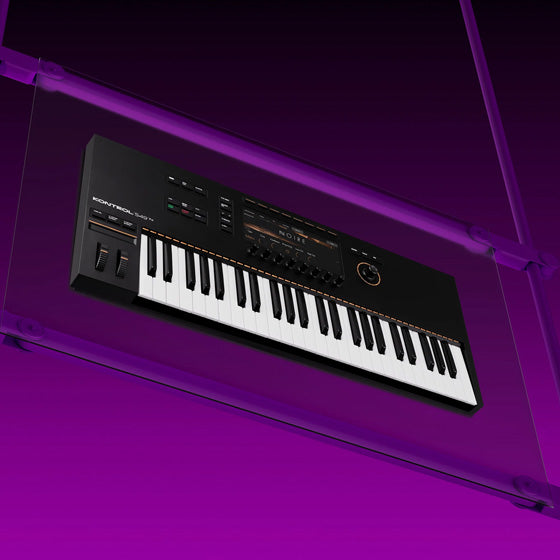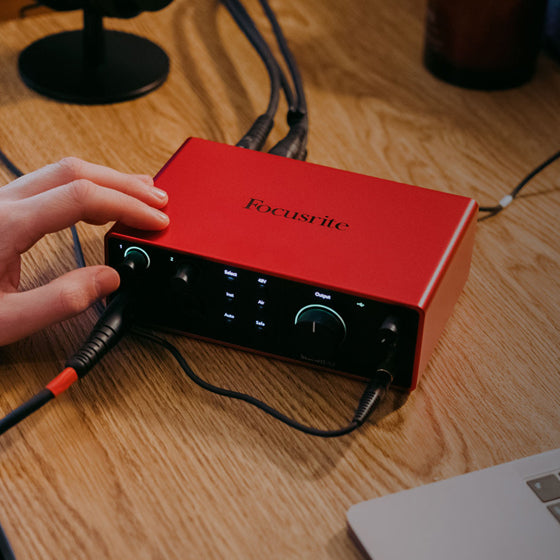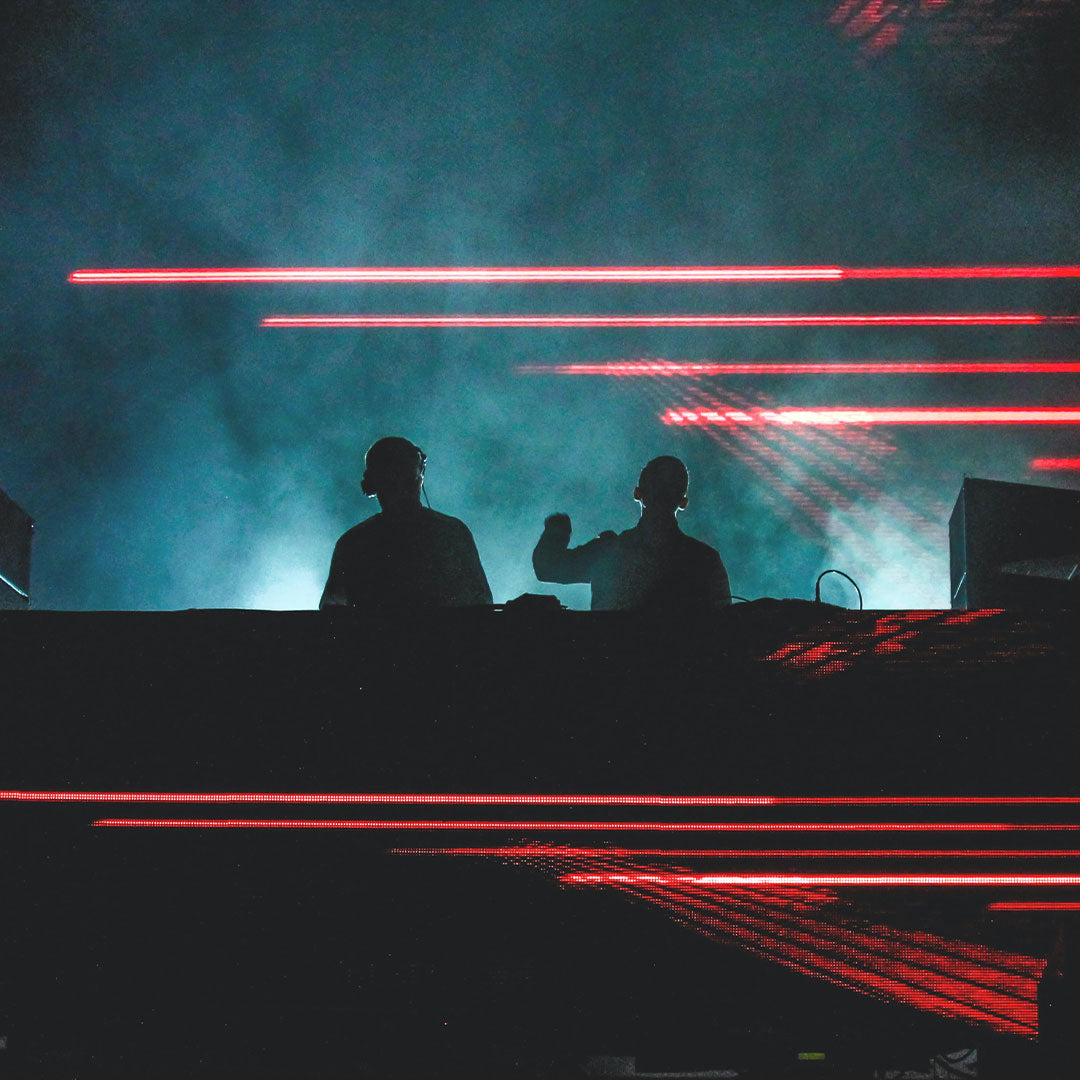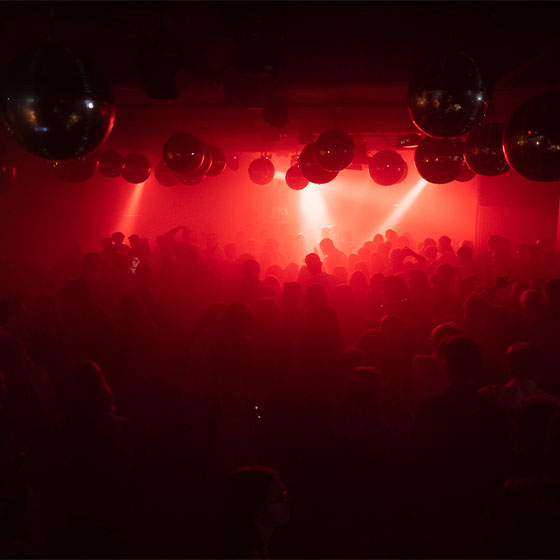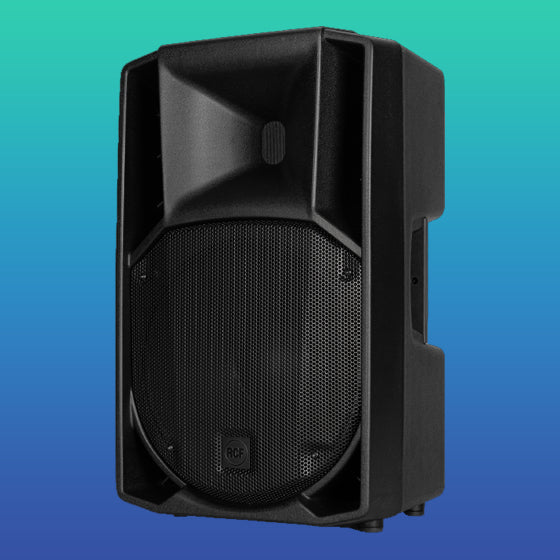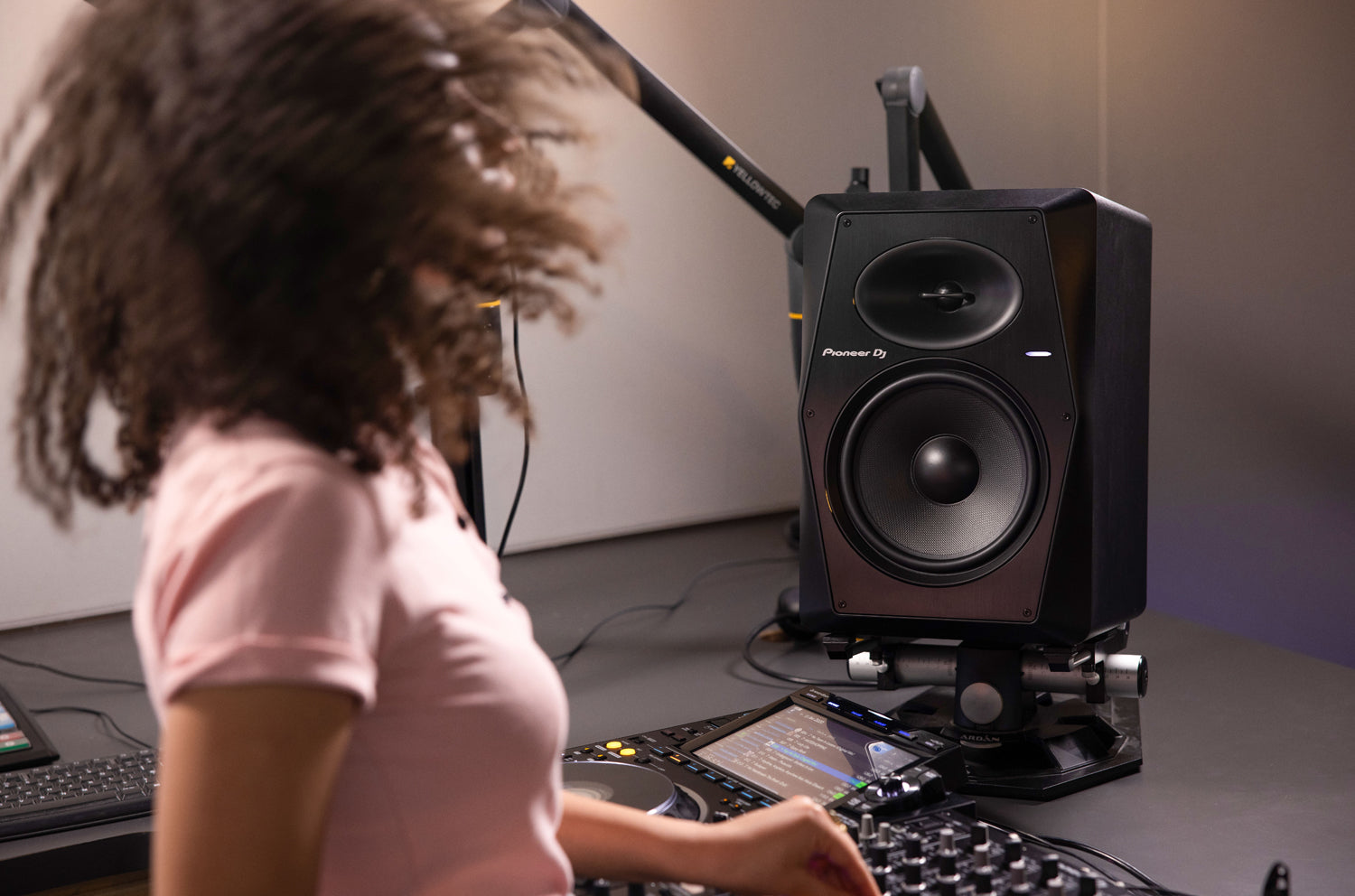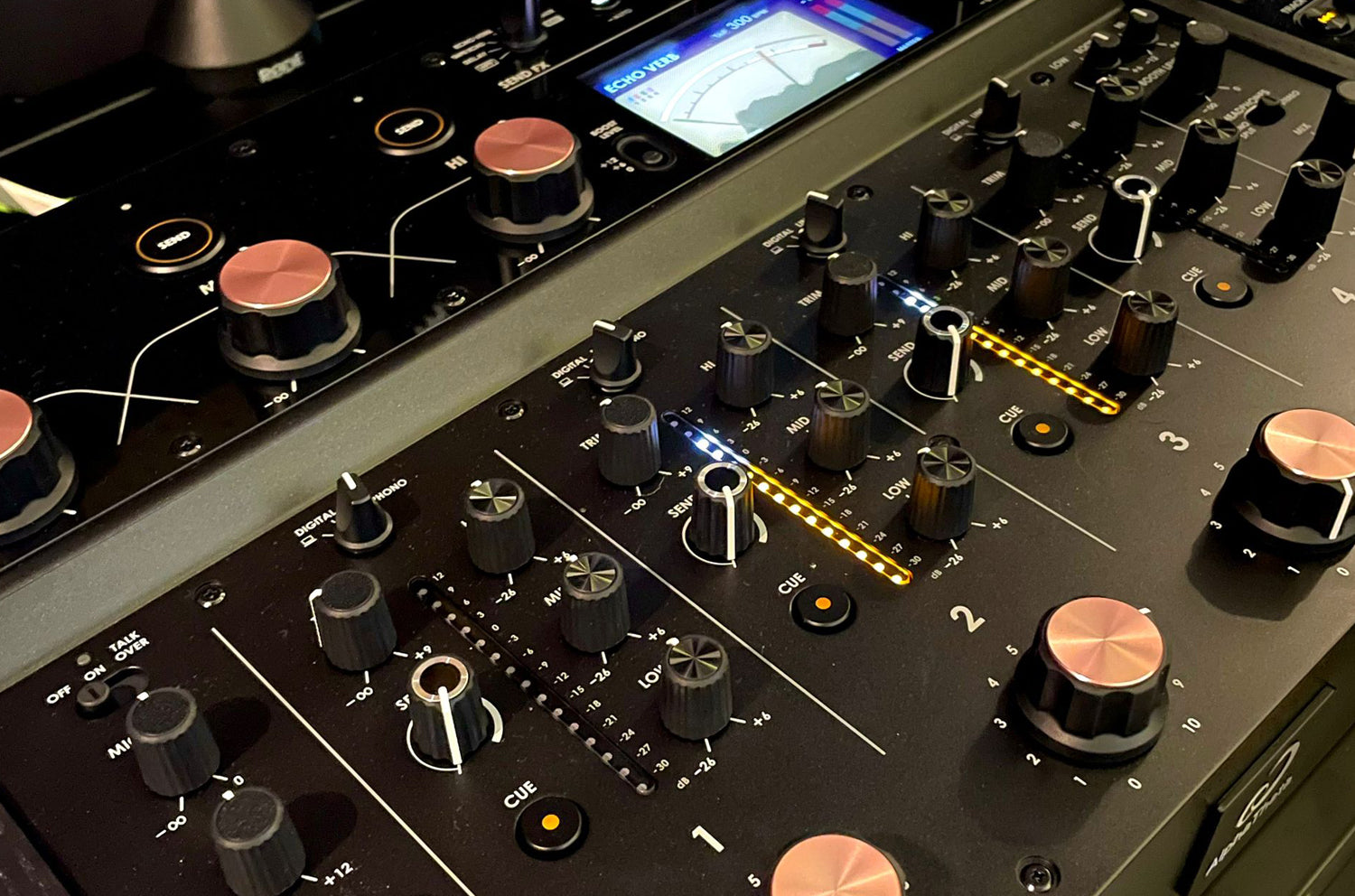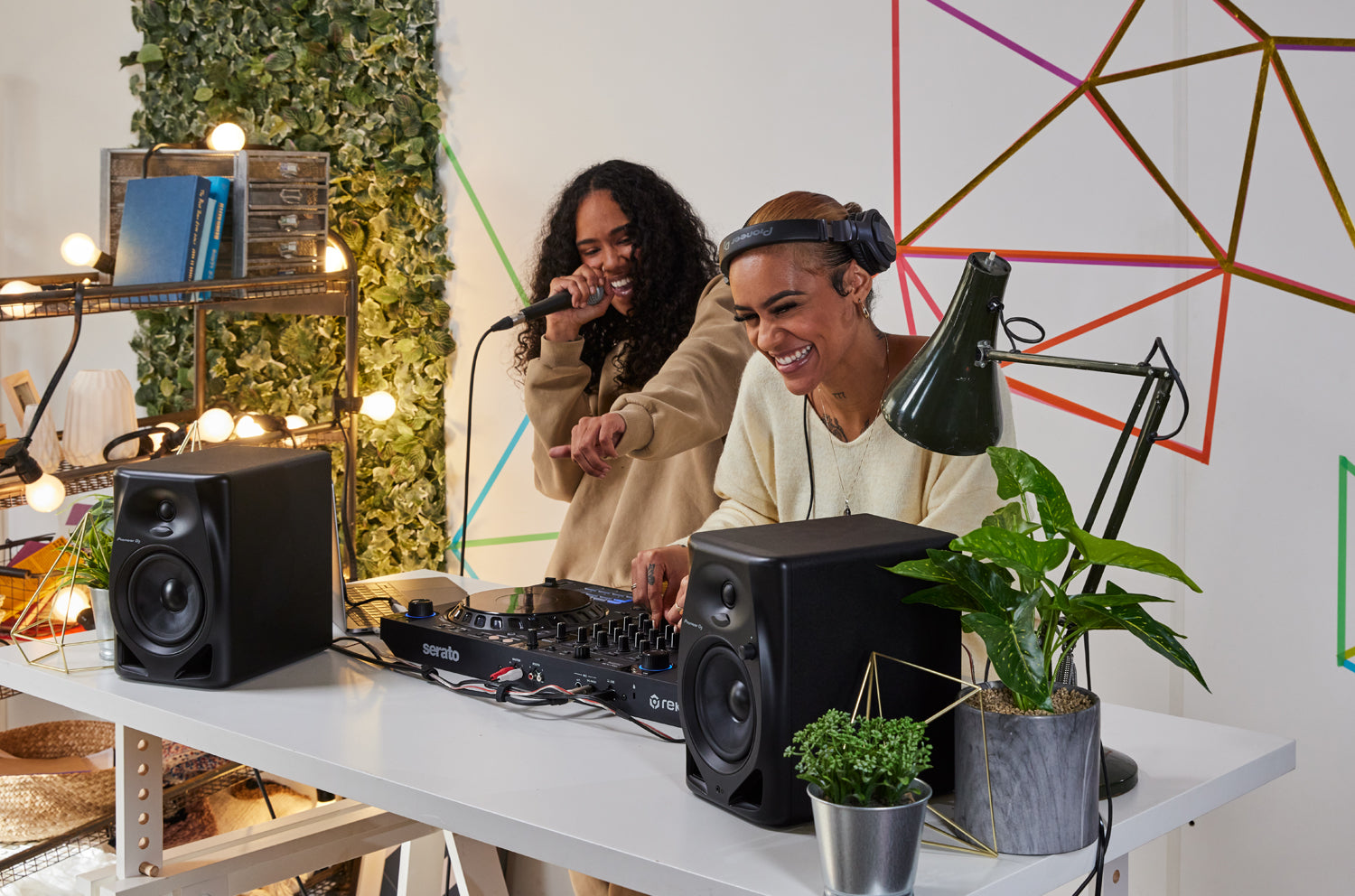Solid DJ monitoring is an often-overlooked element of many setups, whether that’s at home, in the club and even in radio broadcast environments. In truth, the DJ monitor is just as important as the Studio Monitor is for music producers and studio engineers – in fact there’s a strong argument for using studio monitors for when mixing two tunes, but more on that in a moment.
A typical DJ monitoring setup will include a monitor speaker or two and a pair of DJ Headphones. The size and type of speaker will be governed by the size of the space you have, and also the size of the system that the booth needs to compete with in club and festival environments.
In most cases, the monitoring takes place in a relatively nearfield space. However, unlike a typical studio monitoring environment when the producer or engineer remains in a “sweet spot” the energetic DJ will often find themselves moving around within the space between the speakers.
Why do you need good DJ monitoring?
Whether you’re creating a mix at home or playing to a huge crowd, the monitors connect you to your music. Every decision you make will be informed by what you’re hearing. Your DJ headphones will allow you to cue and beat match, and you shouldn’t be entertaining a blend if your beats are not in time. Equally as important are any EQ and volume adjustments that you make, both while transitioning between tunes and then afterwards. You can only achieve the perfect balance if your monitoring is on point!
The audio quality that your DJ monitors provide will make a huge difference to your EQ and level balancing when you’re in the mix. A speaker that can’t reproduce low frequencies well might force an unnecessary tweak to the EQ or overall track level and problems elsewhere in the frequency spectrum will quickly create EQ issues in the mix.
Whether you’re playing in a venue, on a festival stage or in the bedroom at home, remember that your ears are a vital link in the monitoring signal chain – it’s often overlooked but ear protection that attenuates certain frequencies can influence mixing and EQ decisions. It’s far better to dial back the volume in the DJ booth, rather than wearing hearing protection that could lead to you punishing the ears of the dance floor crew.
Can you use Bluetooth speakers for DJ monitoring?
While there are bookshelf monitors, and PA speakers, that feature Bluetooth audio connectivity, this functionality can’t really be used for DJ monitoring for two reasons. Firstly, the encoding and subsequent decoding that’s required to transmit audio via Bluetooth introduces a delay. The latency caused by the transmission processing that’s required will make beatmatching incredibly difficult, you’ll always be “ahead” of what’s happening with the audio you’re hearing.
Secondly, Bluetooth is a “lossy” transmission protocol. Some of the audio information is discarded to reduce the amount of data that needs to be sent and decoded when it arrives at the speaker. This means that you’ll never be truly hearing the audio that you’re streaming, recording or playing to a crowd.
While the current Bluetooth audio codecs aren’t up to the job of wireless DJ monitoring, the next generation of Bluetooth codecs promise low latency and improved audio quality as the required processing power becomes more affordable – we could be mixing over Bluetooth as some time in the medium term.
Wireless DJ Monitoring
You’d be forgiven for thinking that the latency introduced by Bluetooth would remove the option for wireless DJ monitoring, but this isn’t the case.
Back in the days of good old pirate radio, the DJ monitor would be a radio tuned into the FM signal of the station. This was thanks to the lack of digital encoding needed to broadcast audio and had two distinct advantages; first up you were hearing the same signal as your audience (enabling you to make solid and informed EQ and mixing decisions) and secondly you could hear when the DTI had hit the rig. The sound of white noise spelled the end of the set and time to kill the link!

Thankfully, there’s no need to break the law to get usable wireless audio with the AIAIAI Unit 4 monitors and the AlphaTheta Wave-Eight speakers. Both take a similar approach to great sounding, low latency wireless audio. Simply connect a small transmitter to the output of your DJ mixer, controller or all-in-one DJ system and then pair the speakers. The transmitter takes care of the encoding, which is fully lossless in the case of the Wireless+ and Unit 4 from AIAIAI, the Wave-Eight and SonicLink combo is encoding with a high-quality codec that does reduce the audio data transmitted slightly. Both options are capable of low-latency audio playback but this technology isn’t cheap as it requires some serious number crunching.
How important are good DJ Headphones?
If the DJ monitors in front of you are on point, whether that’s a great pair of bookshelf DJ monitors or even a solid pair of hi-fi speakers (like the Kanto Ora that we reviewed recently), right through to a serious rig in the booth or on stage, your headphones are just as important.


